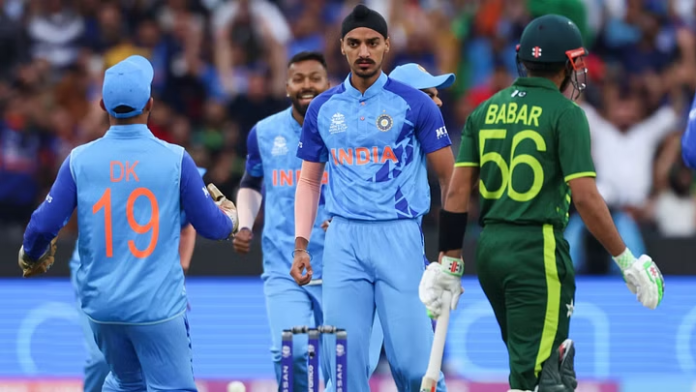For the second year in a row, Wanindu Hasaranga of Sri Lanka topped all bowlers in the ICC Men’s T20 World Cup with 15 wickets, which was the most of any bowler.
Wanindu Hasaranga – 15 wickets –
As one can see from t20 match highlights, Hasaranga finished the tournament with 14 wickets, which is one fewer than he had in 2021, but he still had the most of any bowler in the competition. In 2021, he had 15 wickets. His greatest result was three out of eight hits. Hasaranga’s 13.26 batting average proved to be an invaluable asset for Sri Lanka all during their T20 World Cup campaign.
Bas de Leede – 13 wickets –
In the competition, De Leede finished with 13 wickets at an average of 13.0 and excelled at the end of the innings with his medium pace, which allowed him to take 13 wickets. Additionally, the fact that his economy rate was 7.68 proved that he played a wonderful supporting role in the fantastic speed onslaught that the Netherlands delivered.
Sam Curran – 13 wickets –
Sam Curran, who was awarded the title of Player of the Tournament, finished with a total of 13 wickets, five of which came in a single game during which he achieved the first five-wicket haul by an England player in men’s Twenty20 Internationals. In the championship match held at the MCG, Curran achieved a remarkable score of 3/12 by dismissing Mohammad Rizwan, Shan Masood, and Mohammad Nawaz in quick succession.
Blessing Muzarabani – 12 wickets –
Blessing Muzarabani of Zimbabwe was a powerful force with the ball on his comeback from injury. He took 12 wickets at an astounding 16.58 runs per game and was able to do so while also avoiding injury. His three wickets against Ireland were a significant contributor to Zimbabwe’s victory by 31 runs.
Anrich Nortje – 11 wickets –
On the challenging Australian fields, Nortje’s combination of speed and bounce caused batters a lot of difficulties. He was the finest of South Africa’s great pace attack, and he finished with 11 wickets overall. His four-over spells against Bangladesh (4/10) and the Netherlands (1/10) were among the most economical in this round of the T20 World Cup. Bangladesh was the team he bowled the most overs against. In the tournament, he collected another four-wicket haul, this time against Pakistan, as a result of the problems caused by his pace.
Shaheen Afridi, 11 dismissals –
Shaheen Afridi showed signs of regaining his best form in the warm-up match he played against Afghanistan; but, in the official games he played against India and Zimbabwe, he did not take any wickets. After that, he went on to win the competition by bowling spells of 3/14 (against South Africa), 4/22 (against Bangladesh), 2/24 (against New Zealand in the semi-finals), and 1/13 (against Australia). In the 16th over of the championship match, Shaheen received an injury, which may have provided England with an opportunity to win.
Shadab Khan – 11 wickets –
The remarkable bowling performance and 11-wicket haul that Shadab produced in against South Africa were also among the best individual outings of the championship. The top spinner for Pakistan seemed to be comfortable in his own skin and showed significant growth in his game management.
Josh Little, 11 dismissals –
The Irish left-arm quick’s incredible performance in the Twenty20 World Cup was topped off with a hat trick. During the encounter between New Zealand and Australia in the Super 12 tournament, Little scored a hat trick by knocking out three of the Kiwis’ players: Kane Williamson, Jimmy Neesham, and Mitchell Santner. In the end, he ended the match with 11 wickets despite conceding an average of just seven runs per over.
Paul van Meekeren – 11 wickets-
Van Meekeren was one of the Netherlands’ many exceptional quicks at this year’s Twenty20 World Cup due to the remarkable control and movement he has shown throughout the competition. He was one of the numerous excellent quicks that the Netherlands has, and he was one of them. His performance in Adelaide, in which he took 3/29 and contributed to the Netherlands’ victory against Zimbabwe by 117 runs, was his career high. This was without a doubt his greatest performance. He had taken two wickets in each of the matches against Sri Lanka and Bangladesh. Bangladesh was the other team.
Arshdeep Singh – 10 dismissals –
Arshdeep Singh emerged as one of India’s most effective bowlers throughout their attack with the ball, particularly when he was bowling with the new ball and in the latter overs of the match. This was especially true while he was bowling with the new ball. As a direct consequence of his outstanding periods, both India and South Africa got off to productive beginnings with the ball early on in the game. Even though he only went wicketless in one game (India’s semi-final match versus England), he showed a large level of promise to become India’s main bowler in this format in the very near future. This potential was shown despite the fact that he only went wicketless in one game. This potential was made clear by the fact that he only went wicketless once during the whole of the competition.
Sikandar Raza – 10 wickets –
After acquiring a huge variety of new talents, which he used to his advantage, Sikandar Raza improved his overall worth by dominating with the ball in addition to his striking skills. This allowed him to increase his overall value. Because of this, he was able to improve his worth overall. In the game that he was playing against Pakistan, he rapidly eliminated Shadab Khan and Haider Ali, which allowed him to change the direction of the fight and win. In total, Raza was responsible for 10 dismissals, and he only let his opponent’s side score 16 runs off of him (at a rate of 1.6 per over).
